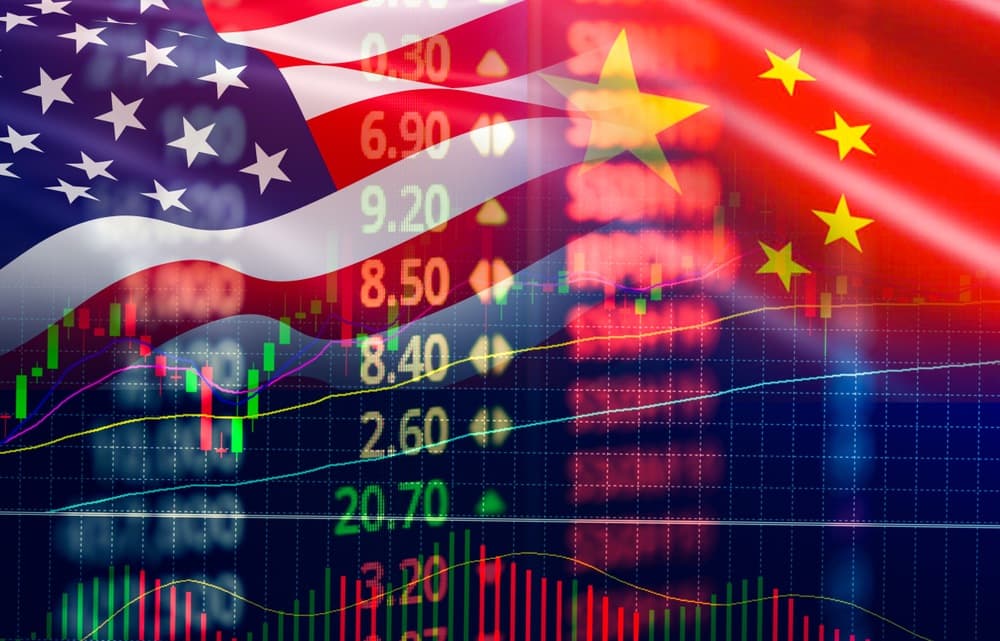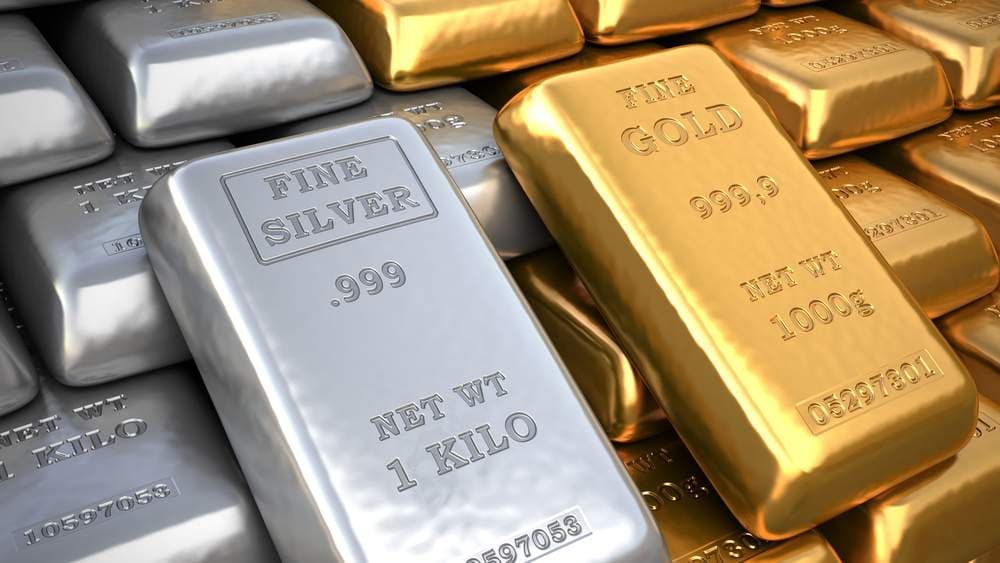Beneath the Surface
Warning: Kamala’s Policy Failed Already
August 16, 2024 • 9 minute, 38 second read

“Whatever the reasons, every American family is confronted with a real and pressing problem of higher prices. And I have decided that the time has come to take strong and effective action to deal with that problem. Effective immediately, therefore, I am ordering a freeze on prices. This freeze will hold prices at levels no higher than those charged during the first 8 days of June.”
–Richard Nixon, June 13, 1973
August 16, 2024 —
There’s a TikTok going around accusing Kamala Harris of being drunk at the podium during her tag-team rally with Joe Biden yesterday.
That’s what voters want … to ridicule the other guy. Forget policy.
Eventually, some semblance of economic policy must be revealed. After a “positive” CPI we got a semblance of economic proposals.
Which prompted us to wonder… is it really too much to ask for democratic think tankers to come up with some original, more entertaining, ideas for ruining the economy?
Richard Nixon maintains the highest rank among punching bag for political jokes, even decades after his passing. Dismantling Bretton Woods was just the beginning of the policy disasters foisted on the American people by its first “imperial” president.
Contrary to his promise to voters on August 15, 1971, the video for which we included yesterday, the dollar did not maintain its value the next day… or the decade that followed.
The Great Inflation” of the 1970s was feat not accomplished again until pandemic lockdowns and direct Treasury payments to citizens 2020-2022. But the trajectory of the dollar has been a disaster for 53 years.
We love how economists write about currencies. A single 1971 $1 is equivalent to $7.77 in 2024. To the weary eye, that’s an increase of 677%!
It also means, however, the “real value” of a single U.S. dollar decreases over time. Your measly little Federals Reserve note will pay for increasingly fewer items at the store.
The “inflation” of the dollar means its value to you erodes over time. It may seem pedantic to go over the numbers, but we do so here in case any of Kamala Harris’ policy advisers need a quick refresher:
Listen up cupcake, the “value” in 1971 dollars, for $1 is worth is a skosh just over 12 measly cents 53 years later.
In Harris’ home turf, the bay city of San Francisco, California, the average half-century inflation has averaged 4.21%. A 1971 $1 skyrocketed 791% to $8.91.
As the math goes, that means the $1 in purchasing power is now only worth $.09.
Since long before Nixon, politicians, especially those running absurd populist campaigns, can’t help themselves. To most, there ain’t any “fixes” for price inflation or to the economy at large they won’t support. That is, except the real “fix” which they can’t promise to get elected: cut public spending.
It was Alexander Fraser Tytler, Lord Woodhouselee, who famously observed at the advent of the United States in 1789 that a democracy can only survive until the citizens figure out they can vote themselves into the public treasury.
Observed the lord, too, about a favorite tool of populists:
“Patriotism always exists to the greatest degree in rude nations, and in an early period of society. Like all other affections and passions, it operates with the greatest force where it meets with the greatest difficulties … but in a state of ease and safety, as if wanting its appropriate nourishment, it languishes and decays”. … “It is a law of nature to which no experience has ever furnished an exception, that the rising grandeur and opulence of a nation must be balanced by the decline of its heroic virtues.”
A sentiment that easily applies to the foolishness of the U.S. Presidential election.
Before Nixon was President, Ike’s VP, or even a senator or congressman from California, he was an attorney, and an officer in World War II, serving in the Pacific.
For a brief moment in the 1940s, he also worked in Washington, specializing in price controls. While such controls may have been deemed essential to fighting World War II, it’s no surprise that Nixon would come back to this tool during the heavy inflation of the 1970s.
Of course, we know, as Nixon should have known, Milton Friedman’s dictum that “Inflation is always and everywhere a monetary phenomenon.”
In other words, if you’ve got inflation, you’re printing too much money.
Alas, Richard Milhous “We’re all Keynsians now” Nixon didn’t see it that way. The champion of anti-communism – see his Senate run in 1950 – turned to one of the most totalitarian tools possible with price controls.
Naturally, the price controls didn’t fix anything. They simply exacerbated existing shortages.
Nation after nation has tried price controls throughout history. Rather than run through the list, we’ll simply skip to the end and note that they’ve all failed. Every last one. Every single time.
Enter Kamala Harris. The former California Senator – who once held Nixon’s seat – is channeling the disgraced former President today, by seeking to bring back price controls.
Yes, price controls sound appealing. It fits in with a politician’s mantra to “do something” in a crisis (real or imagined). And in the very short term, it can provide relief.
Much like how your $1,200 Covid stimulus check provided relief. But how much more are you paying now (and will into the future) following our brief flirtation with double-digit inflation?
Delving deeper into a potential Harris Presidency and its economic pain points is investigative journalist Jordan Schachtel of The Dossier. Enjoy ~~ Addison
The Kamala Harris Plan to “Fix” the Economy Will Instead Crash the Economy
Jordan Schachtel, The Dossier
Vice President Kamala Harris has a plan to fix the economy.
Well, at least she thinks she does, because the lady clearly doesn’t have the slightest understanding of basic market forces. Or maybe she does and she’s happy to destroy the American economy in order to score political points with her base. Either way, what she’s reportedly unveiling on Friday is the height of insanity.
Harris will reportedly unveil her economic agenda on Friday, and it will involve several destructive elements.
First, she proposes providing up to $25,000 in down payment support for hundreds of thousands of first-time homeowners, in addition to delivering tens of thousands in tax credits to first-generation homeowners, according to several media reports.
Let’s run the numbers on that one.
There are 1.8 million first-time homeowners in America on an annual basis. So that program, if it comes to fruition, would result in at least $45+ billion(!) in annual spending. If you’re denominating this amount in Ukraine slush fund bucks, it comes out to about One Annual Zelensky.
Like almost all government spending initiatives, the home buyers program would come with zero productivity attached to it, meaning it would just make homes more expensive. It would further manipulate housing markets and further detach our society from the understanding that a home is a home, and not an investment vehicle. The specific downpayment assistance would put people in homes who probably shouldn’t be buying homes. This would help to spark a home mortgage crisis akin to the financial crisis we witnessed during the Obama years.
Idea number two is a plan to “ban corporate price-gouging” at grocery stores.
Now, there are already laws to prevent price gouging, though I believe they’re not helpful.
Nonetheless, it seems that Kamala Harris wants to impose socialist price controls at grocery stores, leaving pricing mechanisms up to bureaucrats in D.C., and not the people who work in the industry. Of course, we’ve seen this story play out in Cuba, Venezuela, and elsewhere, where price controls lead to food shortages, misery, destruction, and poverty.
Yes, prices in grocery stores are very high, and that’s because of the policies installed in part by the Biden-Harris Administration, and the money-printing fiasco that Congress has allowed to become the norm in D.C.
Lastly, VP Harris will reportedly declare that her administration would build three million new housing units, proposing a $40 billion innovation fund to make it happen.
That’s right. “Shovel-ready” construction jobs! A whole lot of them!
Adding to the supply of homes may bring down housing prices, but it would also end up harming people who already own homes. And let’s be real, there’s zero chance that a government home-building program would result in all of these structures being built at a non-astronomical cost per unit.
With these three programs alone, Kamala Harris would easily add $100 billion-plus to the annual deficit. They would provide zero positive impact on American society, make inflation worse, and potentially spawn a food crisis in the United States.
The VP and *selected* Democratic nominee for president is dangerously clueless. Not even the formerly sentient “capitalist” Joe Biden would have proposed something this destructive. These policy proposals are a full, bear-hug embrace of tyrannical socialism. ~ Jordan Schachtel, The Dossier
So it goes,
Addison Wiggin,
Founder, Grey Swan
P.S. Yesterday, I asked our Fraternity members (you) for your insights, as part of our plan to become a more “open source” community.
Our buddy from Houston, honorary Grey Swan member Robert, writes:
Addy,
You asked some questions:
1) The US Dollar strength lies in its deep liquidity. Treasury,
Debt and Equities are trusted. There is no replacement for size.
The UK mostly lost reserve status before disastrously winning two
world wars which did not halt the slide. Commie yuan ain’t ready.
[Addy comment: Not that it’ll stop them from trying [link Judgement Day promo].]
2) Kursk is a small 1,000 km2 incursion. About the size of Houston.
The question we are being distracted from is: Why Now? Earlier
would’ve been easier. It is a simple stall — Ukr capitulation
before the US elections would cost the Dems too many votes.
3) Putin and Sr. leaders know full well there’s only one way they
can lose the Ukr War — the unjustifiable use of nukes which
would set the world against them. India and China stop buying
their crude oil. Not that Ukr can assemble a nuke-worthy target.
Likewise, Iran knows closing Hormuz is an endgame. Very sad when
your opponents are more rational than your allies. Choose better?
Maybe not if you’re worried about competition.
— Robert in Houston
Robert’s one of a dozen or so thoughtful responses so far. Keep ‘em coming!
But, please, if you have any thoughts, please take some time to send your own thoughtful note my way. I’ll be sharing your unique insights with our contributing members, and we’ll use these ideas to help guide our research.
The request is simple. Just drop me a line … with any thoughts you have to the following topics:
- What are we missing? What sources do you recommend for our research?
- What are your thoughts on the 50th anniversary of Tricky Dick’s disco age price control crime spree?
- Is there a legit connection between the events of August 15, 1971 and our most recent bout with historic levels of price inflation?
- What do the forever wars have to do with the price of your home… how much you pay in tuition or healthcare… the cost of raising your family and planning for your future?
- What are your thoughts about “grey swan events” in general?
These questions are all meant to get your own juices flowing. Think about ‘em… send us your own ideas.
Here’s a bonus question: what’s your favorite investment idea for the election and/or the remainder of 2024?
Insightful responses only… your chance to contribute to the Fraternity. Send them here: addison@greyswanfraternity.com



